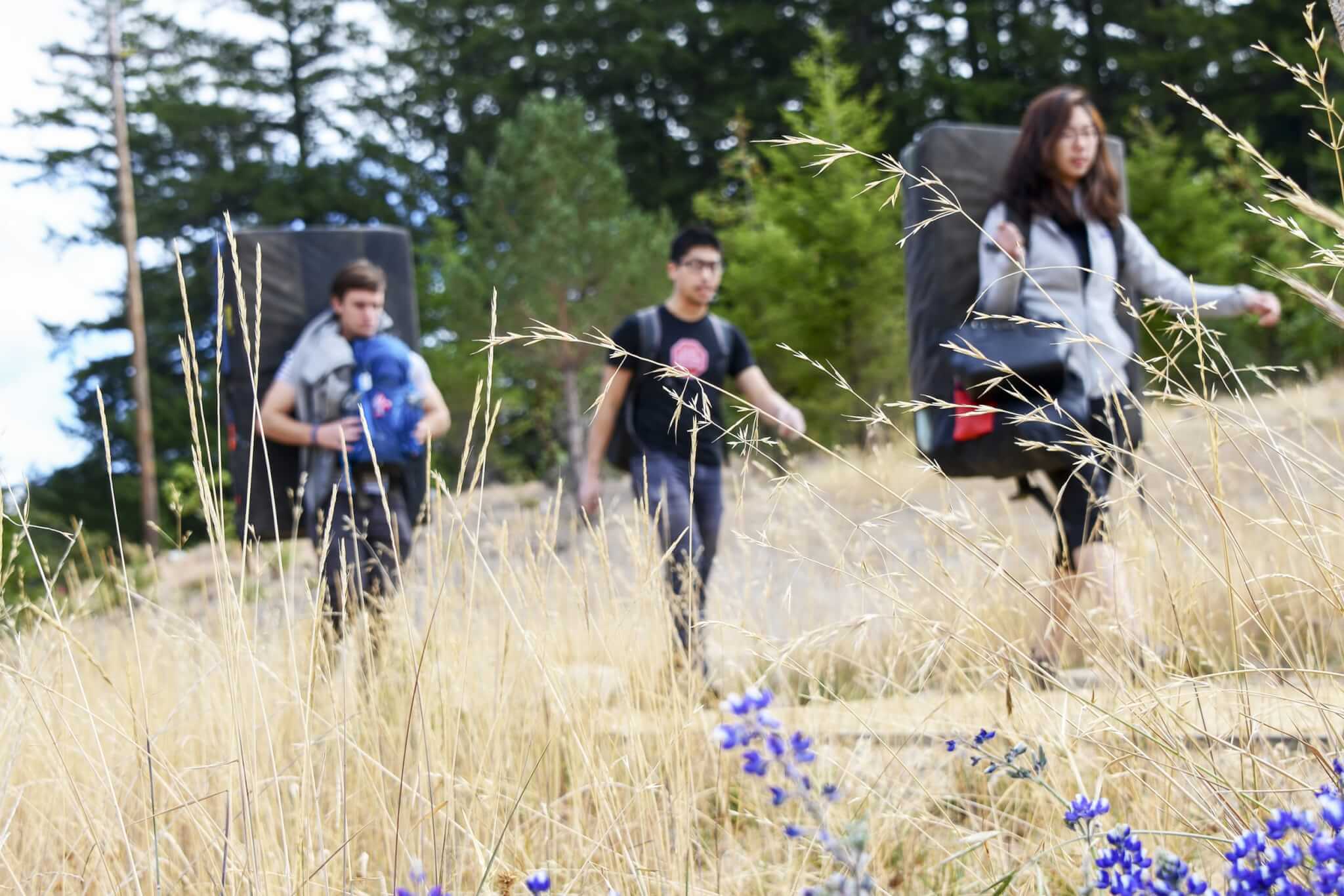Preservation and Restoration
For each property in our care, we generate a stewardship plan which gives us, our partners, and our neighbors clarity and guidance about the resources we are preserving and the natural features we are restoring.
Each landscape is different and our conservation and restoration activities vary from property to property. And the benefits are as plentiful as the redwoods themselves.
Healthy Forest Habitats

- Removing human-made debris (such as abandoned cars or dilapidated structures)
- Removing invasive plants
- Restoring streams to improve fish passage and habitat
- Reforesting by planting redwoods and other native seedlings
- Controlling erosion on roads and building infrastructure, such as culverts
Thriving Wildlife

Working with our Science Advisory Panel, regional partnerships, like the Santa Cruz Stewardship Network, and researchers, we are constantly monitoring wildlife to adapt our planning to improve conservation conditions.
We host research projects throughout the region that are giving us a deeper understanding of the behaviors, migration patterns, and needs of critical wildlife species, including pumas, marbled murrelets, coho salmon, red-legged frogs, bats, and more.
Expansive Public Access to Nature

We are also partnering with a pioneering collaborative of conservation organizations to create access to San Vicente Redwoods.
On all these properties we are building trails and roads, decommissioning other unnecessary roads, and enhancing public parks with interpretive signs, displays, and other educational facilities.
You can learn more about our efforts to improve access to redwoods and nature here.
Reduced Risks

We balance these risks in our stewardship planning and in collaboration with neighbors, partners, and regional networks.
Managing these risks means pursuing a range of activities to prepare the land for specific threats, especially wildfire. Wildfire mitigation efforts center on the use of fire as a tool to clear out fuel that would turn a spark into a raging conflagration. Called, prescribed burns, fire is a critical tool for wildfire risk management.
Our systems of roads and trails can also double as fuel breaks, often sited with intent to help stop or pause fires from advancing and to provide access for firefighting teams as necessary.
And infrastructure improvements, such as water tanks, not only support restoration activities, but provide resources for fighting wildfires.
You can learn more about how we steward redwoods forests here.
Support Stewardship of Redwood Forests
Now more than ever we depend on funding from our donors to help us care for redwood forests, to monitor their health, conserve wildlife, and improve waterways, keeping them healthy, thriving and resilient, for generations to come.

